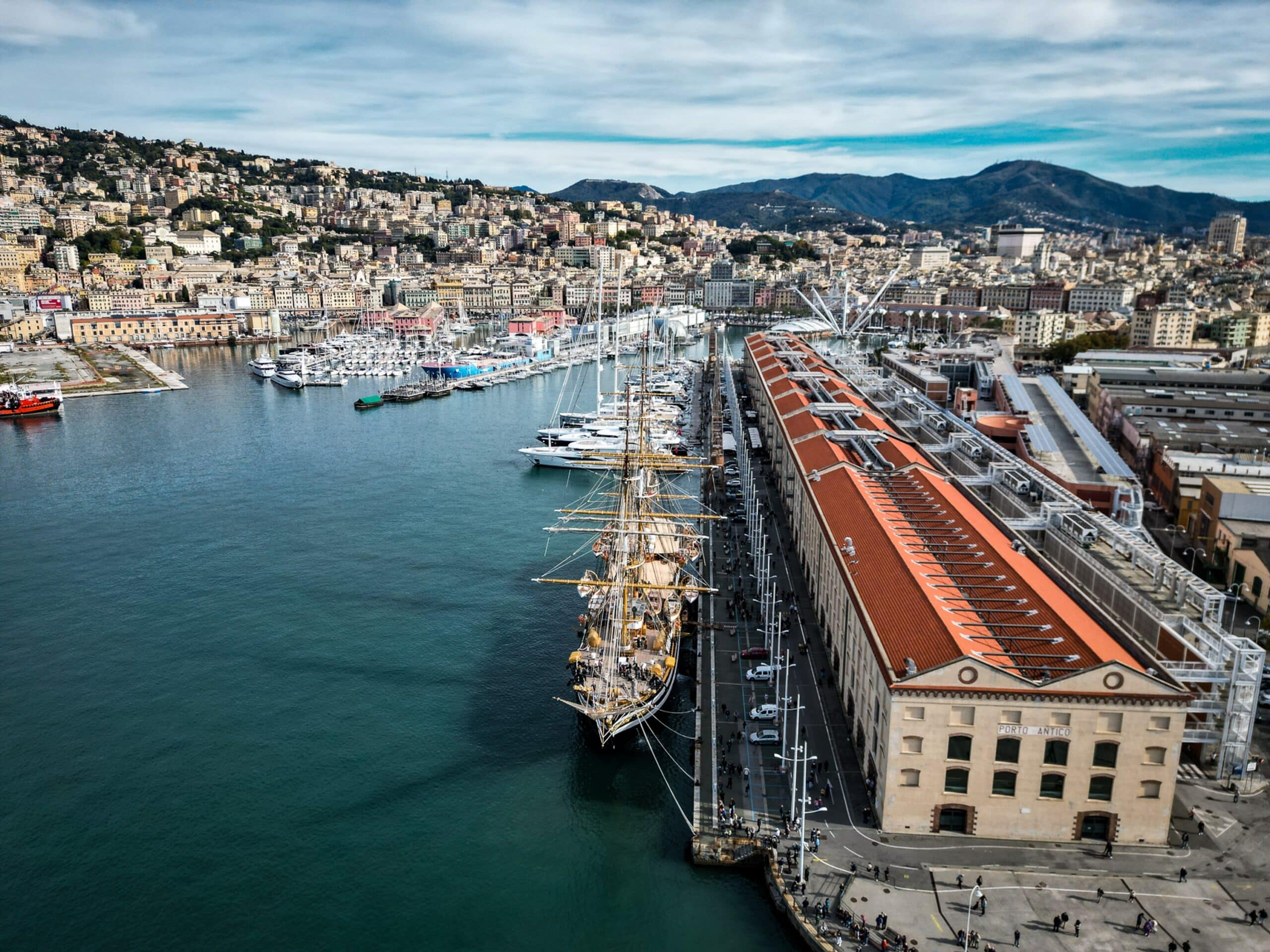LEG 7 PREVIEW: FROM THE HAGUE TO GENOA – THE GRAND FINALE
INTRODUCING LEG 7
🗺️ THE HAGUE ➡️ GENOA, THE GRAND FINALE
🏁 START JUNE 15, 2023
⌛️ ETA JUNE 24, 2023
📏 DISTANCE: 2,200 nautical miles (2,532 mile/4,074 kilometers)\
Leg 7 – the final stage of The Ocean Race 2022-23 around the world – sees the teams battle it out over a 10-day 2,200-nautical mile (2,532-mile/4,074-kilometre) passage from Aarhus, Denmark to the Italian city of Genoa.
As is fitting for the concluding stage of a six-month race whose competitors have circumnavigated the planet Leg 7 looks likely to deliver a wide range of sailing conditions, including coastal, open ocean, and inland sea sailing.
There will be little let up on the pressure the crews are under throughout the 10 days they are at sea and depending on the points tally by then the crews will either be racing for pride or perhaps with a hope of overall victory.
The opening stage of the race takes the yachts along the Netherlands and Belgian coastline before reaching the French city of Calais which marks the easterly end of the 350-mile English Channel between France and the United Kingdom.
The crews will likely work their way along the French coast, cheating tide and dodging rocks, as well as staying clear of the English Channel shipping lanes – which officially rank as the busiest in the world – to exit the channel at the French island of Ushant.
Once out of the confines of the English Channel the course takes the fleet across the Bay of Biscay – a stretch of water which is bordered by France in the east and Spain in the south, and that can in stormy weather produce a boat-breaking seastate. 11th Hour Racing Team sailors Simon Fisher (GBR) and Justine Mettraux (SUI) know that all too well having been dismasted aboard the team’s first IMOCA Alaca’i just north of Spain’s Cape Finisterre during the Transat Jacques Vabre double-handed transatlantic race in 2021.
Once out of the Bay of Biscay at La Coruña on the north west shoulder of Spain the fleet will head south down the Spanish and the Portuguese Atlantic coasts, passing Lisbon on the way to an easterly turn along Portugal’s south coast towards the Strait of Gibraltar – gateway to the Mediterranean waters which the the teams last saw in January soon after the start of Leg 1.
Just as back then on the way out the teams can expect to encounter strong winds and punishing seas on their approach and passage through the strait. Care will once again need to be given to avoid any race-imposed exclusion zones and to respect the rules applying to crossing shipping lanes.
Once through and into the flatter waters of the western Mediterranean the teams will aim to head northeast towards the leg finish Genova. A direct route may be possible but with summer weather in the Mediterranean typically calling for light and fickle winds the fastest option may once again be to head for the coast to pick up thermal breezes close to shore.
Along the way the fleet will pass the Balearic Islands of Ibiza, Mallorca, and Minorca before entering the final section of the leg across the Ligurian Sea past the Spanish, French and Italian coasts on the approach to Genoa.
The waters of the Gulf of Genoa are renowned for light winds in the summer – especially at night – meaning nothing will be certain until the finish line is crossed – a daunting prospect for the by then weary sailors who have just raced a complete lap of the planet.




